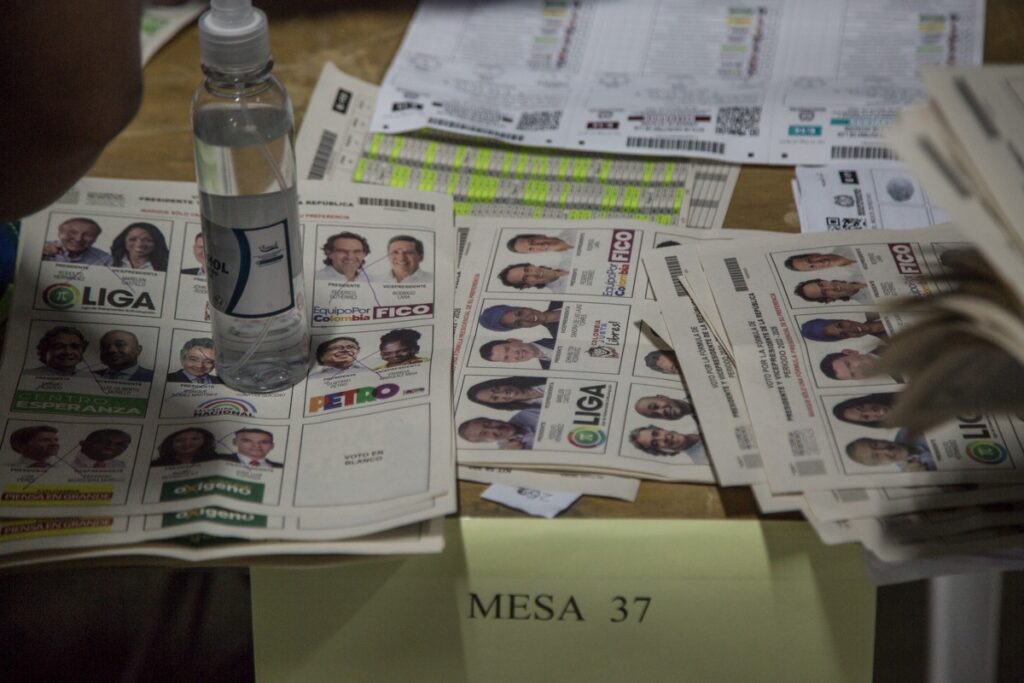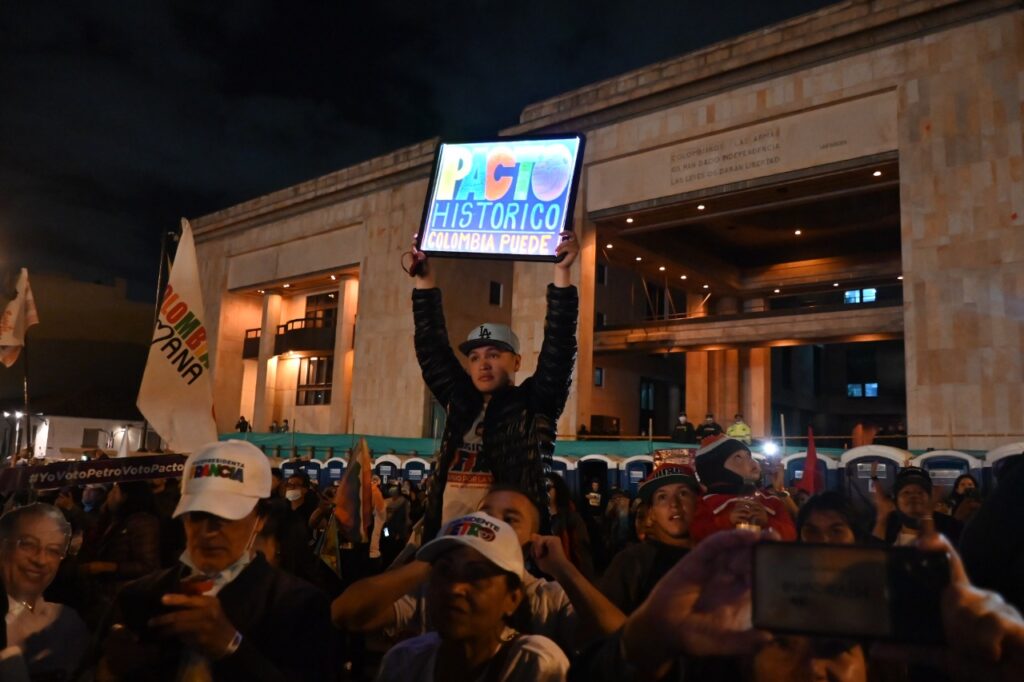
La exclusión racial, poca fe en las instituciones y presión por parte de los grupos armados en poblaciones vulnerables son tres de las principales causas por las cuales existe un alto índice de abstencionismo electoral en Colombia, situación que se reflejó en la primera vuelta de las elecciones presidenciales el pasado 29 de mayo.
Así lo señaló un colectivo de abogadas y abogados por la Defensa de Elecciones Libres en el Pacífico en su informe “El Voto es Pacífico o no Será”, dónde denuncian que hay irregularidades en el ambiente de los votantes que incide en la baja participación del ejercicio del voto.
En ese sentido, subrayaron que dichas irregularidades se centraron en: la colocación de casillas, afectaciones por lluvias, falta de acreditaciones por parte de testigos electorales, así como el miedo o temor a presencia de grupos armados.

Si bien la primera vuelta de los comicios de Colombia se llevó a cabo de una manera pacífica, ya que no se registraron hechos violentos por grupos armados, sí existieron alteraciones en el orden público en regiones como Caquetá, Atlántico, Quindío, Guaviare y Arauca, detallaron.
Asimismo, el documento precisa que hubo denuncias que se dieron a conocer ante la comunidad nacional e internacional y que el comité registró, tal es el caso de: retrasos en las instalaciones de algunas casillas y jurados debido a afectaciones popr lluvias, problemas en las acreditaciones de algunos testigos electorales y la captura de tres personas vinculadas a irregularidades electorales.
El colectivo explicó que, debido a las denuncia realizadas en las elecciones legislativas pasadas del 13 de marzo, mismas que evidenciaron un fraude por parte de la Registraduría Nacional, la desconfianza ha adquirido mayor relevancia entre la ciudadanía.
Así, las regiones en donde se presentó un mayor abstencionismo fueron Bagadó y Chocó con un 71 por ciento; en Buenaventura en el Valle llegó a 60 por ciento; en López de Micay en el Cauca un 66.57 por ciento; y en Santa Bárbara de Iscuandé en Nariño un 72.08 por ciento; mientras que en todo el Litoral Pacífico, el abstencionismo alcanzó un 55.65 por ciento.

Con una población aproximada de un millón 600 mil personas y un potencial electoral de un millón 229 mil 280 sufragantes, la región del Litoral Pacífico no tuvo la respuesta esperada en casillas debido al gran índice de abstencionismo que, aunque tuvo el nivel más bajo de los últimos 20 años, sólo se redujo uno por ciento con respecto a las lecciones de 2018.
Y es que, precisó el texto, la región Pacífica y gran parte de la denominada “periferia”, votaron en su mayoría por el candidato Gustavo Petro y Francia Márquez, sacando más de un millón 962 mil 391 votos en los cuatro departamentos.
En tanto, el cese al fuego por parte de grupos armados ilegales como el ELN, permitió una jornada electoral sin alteraciones al orden público; sin embargo, muchas comunidades del pacifico manifestaron que los grupos realizaban presencia en los territorios.
Cabe destacar que el colectivo señala que en los departamentos de la región Pacífica como el Chocó o el Cauca, se registran índices superiores al 50 por ciento de empobrecimiento monetario de su población; mientras que departamentos como Antioquia o Bogotá, registraron cifras de 29.30 y 35.80 por ciento, respectivamente en el 2021.
Ello, subrayaron, evidencia que aproximadamente la mitad de la población del Chocó y el Cauca, es decir, más de 900 mil ciudadanos viven con menos de cinco mil pesos diarios (1 dólar con 42 centavos).
Es importante acotar, que en los primeros cuatro meses de este año, subrayaron, se presentaron más de 78 mil 900 personas víctimas de desplazamiento masivo y confinamiento a nivel nacional, lo que da cuenta de que el empobrecimiento también ha influido en el abstencionismo en el área.
Te puede interesar: Elecciones en Colombia: entre la derecha de Fico y la izquierda de Petro y Márquez

